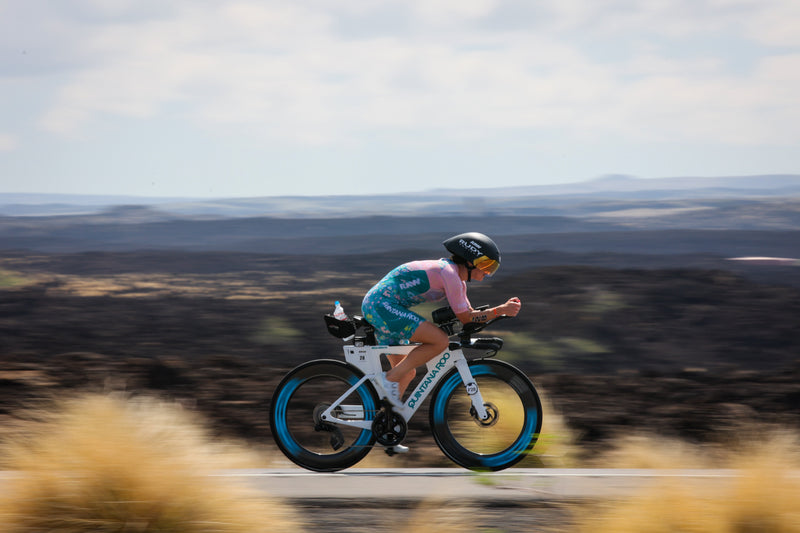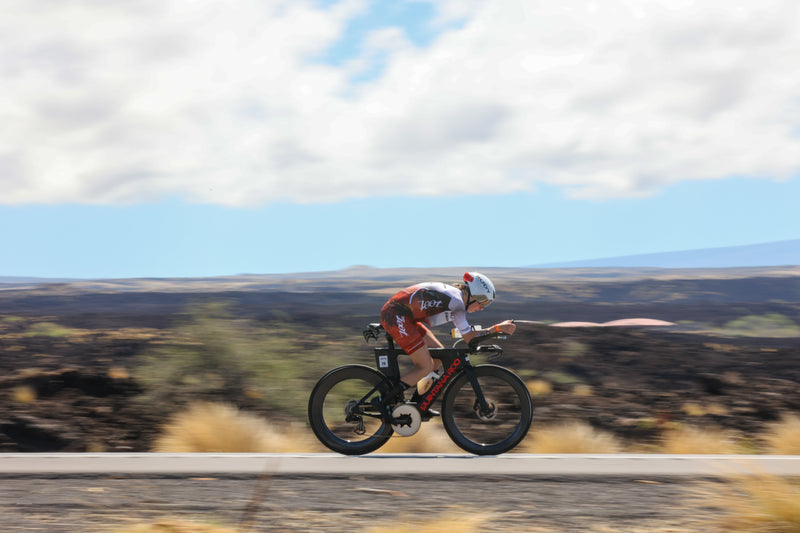HOW TO TRAVEL WITH YOUR TRIATHLON BIKE

One of the most stressful parts of racing isn’t even part of the race itself—it’s getting there! If you’ve ever flown with a bike, then you already know it can be a massive headache. If it’s your first time, ensuring your bike is packed safely can feel nerve-racking.
Fortunately, our team of pro mechanics always travels to major triathlon events around the world to provide support for athletes with mechanical issues. We’ve saved races when athletes’ bikes get damaged in transit or disappear entirely. With all this travelling, they also have tons of experience packing and flying with their triathlon bikes. Over the years, they’ve tested tons of bike bags and have a current favorite: the Evoc Road Bike Bag Pro.
Our team has come to rely on the Road Bike Bag Pro so much that we offer it as an optional extra with any Quintana Roo triathlon bike. When you add an Evoc Bike Bag to your order, you’ll get free shipping, and we’ll ship your new bike to you in your Bike Bag, so there’s no massive cardboard box or packing materials to dispose of.
We’ll show you how to properly pack your Quintana Roo Triathlon bike in the Evoc Road Bike Bag Pro, explain why this is the bag our team uses for our travel needs, and provide a few extra useful tips for flying with your bike.
How to Pack a Triathlon Bike in the Evoc Road Bike Bag Pro
Why We Recommend the Evoc Road Bike Bag Pro
Our pro mechanics spend nearly the entire triathlon race season on the road, providing free services and repairs for Quintana Roo athletes at major events around the world. When you’re wrenching on hundreds of bikes a week, you start to notice trends. One thing they’ve noted is that the most common mechanical issues they encounter at races are often caused by damage during transit. They’ve even experienced this with their own bikes.

No bike bag or box is perfect, but in our experience, some hold up better than others. The Evoc Road Bike Bag Pro is one of the best we’ve used. The “TSA proof” design uses a hybrid construction that combines the protection and durability of a hard-sided bike case with the lower weight, collapsibility, and ease of use of a soft bike bag. The aluminum Road Bike Stand inside the bag keeps your bike secure, and the side-impact absorbers protect the most vulnerable areas of your bike, like the rear derailleur.
It’s also one of the easiest bike bags to pack a triathlon bike into. Only the wheels, pedals, and extensions need to be removed. The aluminum Road Bike Stand is easy to adjust to fit a huge range of sizes (fitting wheelbases up to 112 cm), and the bag has enough height to keep your seatpost installed (though you’ll likely need to lower it.

We also appreciate how easy it is to move this bag around. Fully loaded up, most weigh just over 50 pounds, so our most spindly athletes generally have no trouble lifting them. The chassis is extra wide and stable, with skate wheels that roll easily. There are multiple handles on the outside to maneuver the bag around crowded spaces. A lot of our team members can easily handle walking around with two bike bags at once.
The Evoc Road Bike Bag Pro is one of the pricier bags on the market, but we’ve been so impressed with the durability, quality, and ease of use that our whole team wants to use these bags for our team bikes, demo bikes, and personal bikes.
Triathlon Bike Bag and Travel Tips
AirTag Your Bike

The quality of your bike bag doesn’t matter if your bike never shows up! It’s distressing how common it is for airlines to lose bikes. We have found massive value in a common product: the AirTag. We always place an AirTag or similar tracking device (Tile, Chipolo, SmartTag, etc.) in our bike bags.
We suggest placing it in a Ziploc bag and taping that bag to a hard interior surface, or within a pocket in your bag’s internal space. Your airline may not know where your bike is, but if you’re able to provide proof that it’s sitting on the tarmac, it will help them track it more easily.
AirTagging a bike bag has saved races for many members of the QR team. We’ve had it happen enough times to us and our athletes that we ALWAYS use one when travelling. Hopefully, your bike never gets lost, but if it does, you’ll be thankful you took the time to toss an AirTag in your bike box or bag.
Do an Inspection
Read the fine print. Some airlines have hidden policies requiring hard-sided cases for triathlon bikes. If using a soft case, you may be asked to sign a liability release. Make sure you read the fine print, as some airlines will state they are not liable for damaged bikes when using soft cases.
Also, it’s a good idea to quickly inspect your bike before leaving the airport. Most airlines only have a 2-4 hour window to file a claim for a damaged bike. Inspect your bike for damage as soon as you receive it. Flagging damage immediately can alleviate future headaches.
Keep Your Bike’s Bits Extra Safe

We use the Evoc Road Bike Bag Pro because the hybrid construction and side-impact absorbers do an incredible job of protecting vulnerable areas of your bike. But no bike bag or box is fully immune to mishandling or mistreatment, so if you want to maximize protection, you can improve your bag setup in a few key ways.
We deal with a lot of bent and rubbing brake rotors at events, and often, they get bent in the bike bag. The included wheel bags are great, but if you want to be extra safe, you can remove brake rotors and then store them in something like a bubble wrap pouch or towel, and secure them somewhere in your bag or box where they won’t move or get crushed.
Though it’s not necessary with the Road Bike Bag Pro, you can do the same with the rear derailleur, removing it from your frame and packing it securely in a bubble wrap pouch, box, or towel. This prevents it from acting as a lever and bending the derailleur hanger. If you’re clever with your pack job, you might not even have to remove your chain, but with a chain quick-link and a cheap pair of quick-link pliers, removing and reinstalling a chain is easy. (If you remove your chain, be sure to use a new quick-link when reinstalling!)
The included padding is generally adequate, but extra padding around your frame never hurts. If you’re super paranoid about your carbon frame like I am, you can add extra protection to key areas like the top tube or rear stays to prevent rubbing or damage. I use foam pipe insulation. This is cheap and easy to find at most hardware stores. But pool noodles, bubble wrap, towels, and butcher paper all work and are easy to find.
More Packing Tips

- Remove your pedals first. Waiting until your wheels are off or when your bike is in its box or bag makes removing pedals more difficult.
- Insert a “disc brake pad spacer” in disc brake calipers. These are cheap and come with many new bikes, or you can use a small piece of cardboard inserted between your brake pads. This prevents them from getting squeezed together during transit.
- Let some air out of your tires. This keeps you covered if outside air pressures fluctuate during transit.
- Measure and record your seatpost height. Many bike boxes require lowering or removing the seatpost. If you remove it, you can mark it with a piece of tape. This makes reassembly quick and simple.
- Clean your bike first. Packing a dirty bike sucks! We suggest keeping a pack of baby wipes in your bike bag. This makes wiping things down while packing a breeze.
- Remove the QBox from Quintana Roo tri bikes. Our QBox is the ultimate aero storage solution, but we’ve seen the tabs that attach it to the frame get broken from rough baggage handlers. Take it off and store it somewhere safe!




